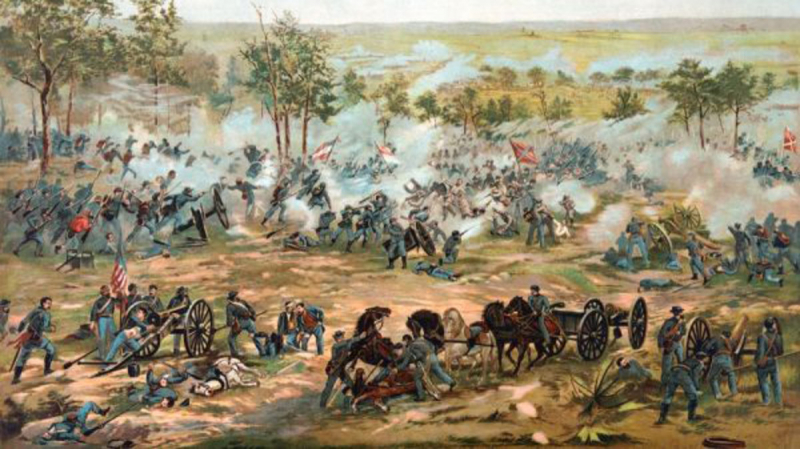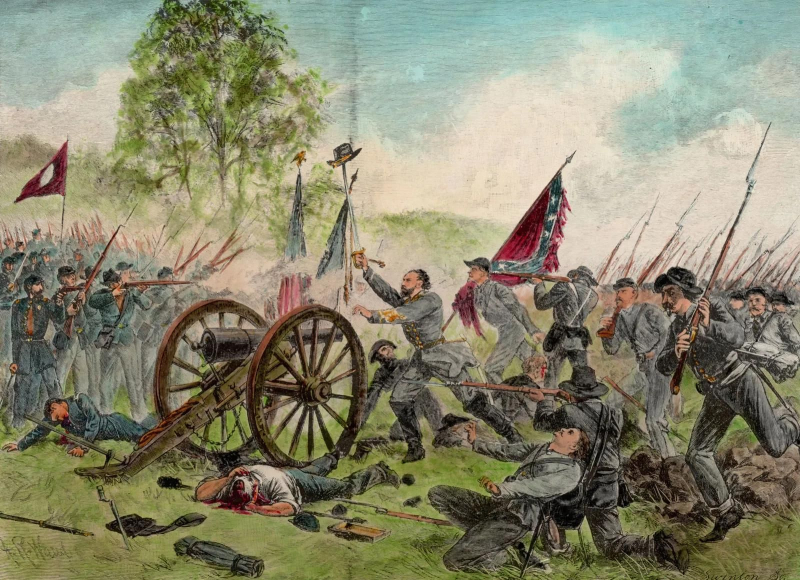Gettysburg
To defeat the Union on its turf, intimidate Washington, D.C., and pressure Lincoln into signing a peace settlement, Lee once more invaded the Union in the summer of 1863.
Additionally, he needed supplies for his soldiers severely because the battle had devastated Virginia. Lee's Army of Northern Virginia was pursued by Union forces under the command of Maj. Gen. George Meade, who eventually caught up with them in Pennsylvania and engaged the Confederates in one of history's most crucial battles at Gettysburg.
The Confederates first drove Union forces from fields to the west and north of the town, but on the second day, they were unable to breach the Union defenses. On July 3, at Cemetery Ridge, south of Gettysburg, Lee launched an assault on the Union forces' nerve center. Confederate Gen. George Pickett led two brigades in an assault on the Union position after two hours of the firing. Pickett's Charge, as it came to be called, was a catastrophe, with 60 percent of the deaths falling on the Confederates. Lee was compelled to turn around and stop his invasion.
The Confederacy suffered a severe defeat in the combat, and both sides suffered terrible losses. 23,000 Union soldiers died, compared to 28,000 Confederate soldiers. The South's ambitions for the Confederacy's international recognition were dashed. Lee was discouraged when President Jefferson Davis rejected his resignation request.
When President Lincoln visited the battleground and gave the Gettysburg Address in November 1863, the significance of the battle increased. Lincoln recast the war as a struggle for the nation in his infamously succinct but impactful speech, which also acknowledged the sacrifice of the troops who lost their lives there.
Time: July 1, 1863 – July 3, 1863
Place: Pennsylvania












